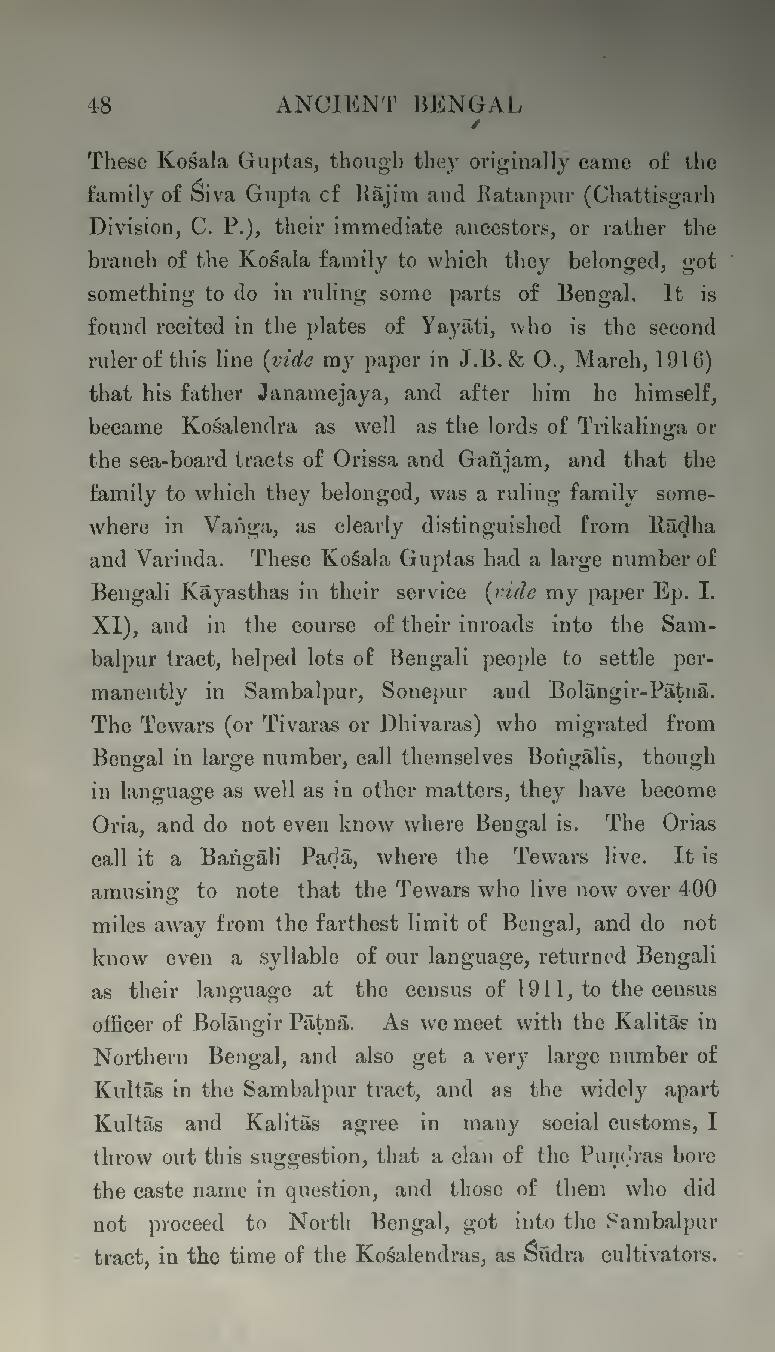These Kośala Guptas, though they originally came of the family of Śiva Gupta cf Rājim and Ratanpur (Chattisgarh Division, C. P.), their immediate ancestors, or rather the branch of the Kośala family to which they belonged, got something to do in ruling some parts of Bengal. It is found recited in the plates of Yayāti, who is the second ruler of this line (vide my paper in J.B.& O., March, 1916) that his father Janamejaya, and after him he himself, became Kośalendra as well as the lords of Trikalinga or the sea-board tracts of Orissa and Gañjam, and that the family to which they belonged, was a ruling family somewhere in Vaṅga, as clearly distinguished from Rāḍha and Varinda. These Kośala Guptas had a large number of Bengali Kāyasthas in their service (vide my paper Ep. I. XI), and in the course of their inroads into the Sambalpur tract, helped lots of Bengali people to settle permanently in Sambalpur, Sonepur and Bolāngir-Pāṭnā. The Tewars (or Tivaras or Dhivaras) who migrated from Bengal in large number, call themselves Boṅgālis, though in language as well as in other matters, they have become Oria, and do not even know where Bengal is. The Orias call it a Baṅgāli Paḍā, where the Tewars live. It is amusing to note that the Tewars who live now over 400 miles away from the farthest limit of Bengal, and do not know even a syllable of our language, returned Bengali as their language at the census of 1911, to the census officer of Bolāngir Pāṭnā. As we meet with the Kalitās in Northern Bengal, and also get a very large number of Kultās in the Sambalpur tract, and as the widely apart Kultās and Kalitās agree in many social customs, I throw out this suggestion, that a clan of the Puṇḍras bore the caste name in question, and those of them who did not proceed to North Bengal, got into the Sambalpur tract, in the time of the Kośalendras, as Śūdra cultivators.
